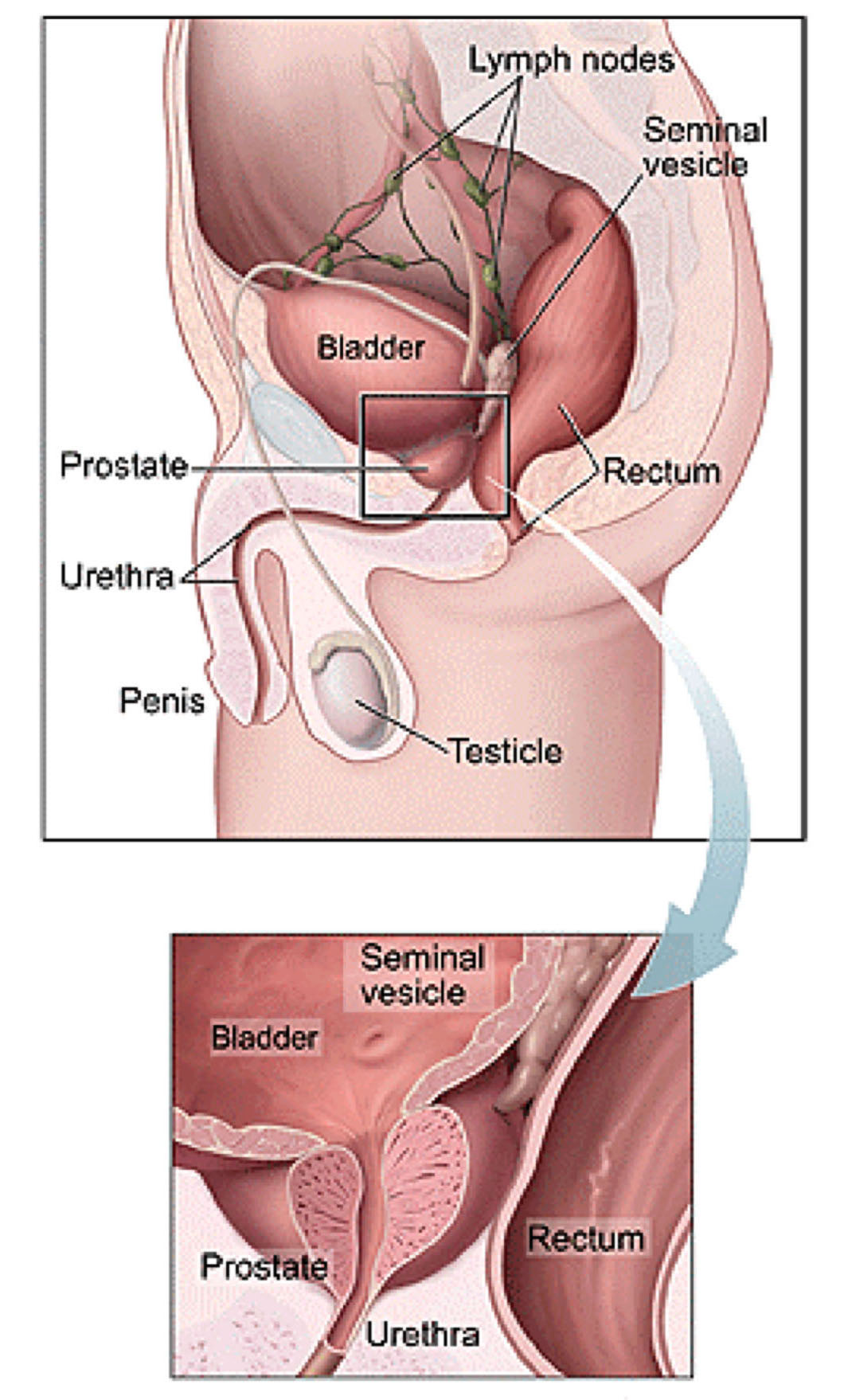
Importance to Educate
Prostate cancer is usually a very slow growing disease.
Once diagnosed there is time to gather information, consider your options, and make a plan. More than 50 percent of men newly diagnosed with prostate cancer have low-risk disease which will likely not spread beyond the prostate to cause harm, problems, or symptoms. However, some prostate cancers are aggressive and will spread beyond the prostate to other parts of the body.
Prostate cancer is the most common cancer diagnosed in Australian men
The 2 simple steps … just once a year
It’s all very simple. Just follow these steps to stay on top of what’s happening down below. Just 2 simple steps every year preferably from age 40 is all it takes.

Step One
Get a blood test today and then once every year
Visit your doctor and ask for a PSA blood test for Prostate Cancer. This is the test that will measure the amount of PSA (Prostate Specific Antigen) in your blood.
This will determine if you have an elevated reading of PSA and it will also give your score! (see step 2). Pick a time for your yearly blood test so you easily remember, such as January, your Birthday, End of Financial Year or Christmas.
Now, there is another test at this point if you choose to have it. It’s called the DRE (Digital Rectal Examination). A DRE may be performed by a Urologist. While the DRE is no longer recommended as a routine test it may be used to check for any changes in the prostate before a biopsy is done.
If either of these tests suggest an abnormality further tests are necessary to confirm a diagnosis of prostate cancer. Further tests may include a biopsy, a bone scan, an MRI, a CT scan and a PET scan.
Step Two
Know your score and start to track it
Now this is important, so listen up… you should start testing from the age of 40 years.
Ask your doctor for ‘your score’ so you can record it.
This is where you begin to track your score to establish your baseline. Your doctor should know to do this too, but sometimes they don’t, so you need to.
It’s not so much about ‘the actual score’ – unless of course it is really high at the first test – as it is about whether your score is stable each year or if it suddenly jumps much higher. This is when you know you need to get on to it and see a specialist.

Prostate cancer claimed more than 3,610 lives in Australia in 2020.

What is the prostate?
The prostate is a small gland forming part of the male reproductive system.
Its main function is to produce fluid which protects and enriches sperm.
In younger men the prostate is about the size of a walnut and is located below the bladder.
It is doughnut shaped as it surrounds the beginning of the urethra, the tube that conveys urine from the bladder to the penis.
The nerves that control erections surround the prostate.
About Prostate Cancer
Prostate cancer rates in Australia are among the highest in the world
Prostate cancer is an abnormal growth of prostate cells, which form a lump (tumour) in the prostate. In time it will spread to other organs, particularly the bones and lymph nodes, which can be life threatening.
Prostate cancer is generally a slow growing disease. However in some cases, particular younger men, the high grade disease spreads aggressively and can be lethal.
A major problem is that prostate cancer at an early (potentially curable) stage usually does not have obvious symptoms.

Prostate cancer claimed more than 3,500 lives in Australia in 2020

Why get tested for Prostate Cancer?
Prostate cancer rates in Australia are among the highest in the world.
As Australia’s most commonly diagnosed male cancer and the second leading cause of cancer related death in men – there are many good reasons to get tested!
- research has shown that testing can reduce the death rate from prostate cancer from 20 to 44%
- early detection of prostate cancer is key to enabling better outcomes and potential cure of prostate cancer
- prostate cancer can be cured, especially when the cancer is still confined to the prostate gland
- early stage prostate cancer often has no symptoms
- it can be life threatening to wait for symptoms to appear before seeking assessment
- prostate cancer that is diagnosed late can be incurable
Who should be tested for Prostate Cancer?
More than 16,750 men were diagnosed with prostate cancer in Australia in 2020
Current guidelines recommend that:
- All men from the age of 50 years with a life expectancy of at least 10 years should have access to a yearly PSA and DRE
- All men who have a family history of prostate cancer should have access to a yearly PSA and DRE from the age of 40
- Health conscious men from the age of 40 should have access to a baseline PSA to quantify their lifetime risk of prostate cancer and guide the frequency of subsequent testing
- Mass population based prostate cancer screening as a public health initiative by governments is currently not recommended
- Testing for prostate cancer, with a PSA blood test and DRE, should only be undertaken after informed discussion with the patient and their treating doctor regarding:
- The pros and cons of early prostate cancer detection
- The consequences of an abnormal PSA or DRE result
- The potential outcomes and treatments that may occur should prostate cancer be diagnosed
- The following should be discussed with your GP:
- The pros and cons of early prostate cancer detection
- The consequences of an abnormal PSA or DRE result
- The potential outcomes and treatments that may occur should prostate cancer be diagnosed

1 in 5 Queensland men will be diagnosed with prostate cancer in their lifetime
Baseline PSA
A benefit for men to have a baseline PSA at the age of 40.
There is increasing evidence suggesting a baseline PSA at the age of 40 has the potential to predict an individual’s future risk of developing prostate cancer. It can then guide the frequency of further testing with a PSA and DRE.
Individuals identified as high risk can undergo close monitoring whilst individuals identified as low risk can have less frequent monitoring. It also allows the identification of a small number of aggressive cancers that can be found in young men.


Does Prostate Cancer Screening save lives?
With systematic testing most cancers found are in a curable stage.
Recent evidence has demonstrated that prostate cancer screening does save lives. A large trial recently published in the world renowned New England Journal of Medicine, demonstrated that PSA based testing reduced the death rate from prostate cancer up to 38%. The trial which was conducted in Europe, studied 162,000 men over a prolonged period and is known as the ERSPC Trial (European Randomized Study of Screening for Prostate Cancer). The results of the ERSPC trial demonstrated that for every 1,000 men tested for prostate cancer, 48 would need to be treated to save 1 life.
What is the risk of Prostate Cancer?
Each year approximately 17,000 Australian men are diagnosed with prostate cancer and more than 3,600 men die as a direct result of prostate cancer. This equates to 55 men being diagnosed with prostate cancer and 9 men dying from prostate cancer each day. It is the most common cancer in men and the second leading cause of cancer death.
In 2008, prostate cancer was an underlying cause of death for more men than breast cancer was for women (accounting for 3,031 deaths or 4.1% of male deaths compared with 2,774, or 3.9% of female deaths).
Approximately 1 in 5 Australian men will develop prostate cancer during their lifetime.
Younger men have less risk of having prostate cancer than older men but if they are diagnosed with prostate cancer they have a higher chance of dying from the disease. The chance of having prostate cancer at a specific age is as follows:
The chance of having prostate cancer at a specific age | |
|---|---|
| For a man in his 40’s | 1 in 1000 |
| For a man in his 50’s | 12 in a 1000 |
| For a man in his 60’s | 45 in a 1000 |
| For a man in his 70’s | 79 in a 1000 |
Family history is the most important risk factor for developing prostate cancer. If one first degree relative has prostate cancer then the risk of developing prostate cancer increases to 20%. If two first degree relatives have prostate cancer this risk increases to 40% and if three first degree relatives have prostate cancer then the risk increases significantly and approaches 100%.
An individual’s risk of prostate cancer is based on their age, race, family history, PSA result and DRE findings.
What are the risks and benefits of Prostate Cancer Testing
Testing for prostate cancer has potential risks and benefits. In making a decision whether or not to be tested these risks and benefits must be assessed.

Potential benefits
Potential benefits of prostate cancer testing and early diagnosis include:
Diagnosing prostate cancer at an early and potentially curable stage when it is localised and potentially curable, prostate cancer that is diagnosed late and spread beyond the prostate is often incurable.
Recent evidence suggests that prostate cancer screening has the potential to decrease the death rate from prostate cancer by up to 44%.
Potential risks
Potential risks of prostate cancer testing and early diagnosis include:
Some prostate cancers don’t present a threat to life and treatment may result in side effects and a reduction in a patient’s quality of life with potential for impotence and incontinence. This is known as overtreatment.
Not all patients with an abnormal PSA will have prostate cancer and the only way to find out is a prostate biopsy. This results in 2 out of 3 men having an unnecessary prostate biopsy with potential side effects.

While there are more than 330 breast cancer care nurses nationwide there are only 72 prostate cancer care nurses.

What are the potential side effects of treatments?
If prostate cancer is diagnosed early, it is potentially curable.
There are many treatment options including: active surveillance, external beam radiotherapy, brachytherapy and radical prostatectomy. Unfortunately all potentially curative options for prostate cancer have potential side effects. These side effects vary greatly between the individual options but include; impotence, incontinence and bowel disturbance. With modern technology these side effects have been greatly reduced.
Why get tested?
How does a man decide whether or not to be tested for Prostate Cancer?
Prostate cancer testing or screening is an important decision for men to make. There is no right or wrong answer and the decision whether or not to be tested is a complex issue. The decision should be made in conjunction with a patient’s treating doctor and their partner after reading the appropriate information on prostate cancer early detection and weighing up the risks and benefits whilst their goals, fears and willingness to accept these risks and potential benefits.
